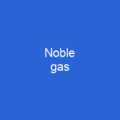Understanding the Gaseous State: A Journey Through the Invisible
Imagine a world where everything is invisible, yet it surrounds us and fills every corner of our lives—this is the realm of gases.
The Basics of Gas
Gas is one of the four fundamental states of matter, existing between liquids and plasmas. It’s like a dance of individual atoms or molecules that are so far apart they can’t be seen by the naked eye. But what exactly makes gases different from their liquid counterparts? The answer lies in the vast separation of particles, which is akin to the difference between a tightly packed crowd and people standing miles apart.
Elemental Gases: Nature’s Building Blocks
Elemental gases such as hydrogen, nitrogen, oxygen, fluorine, and chlorine are like the Lego pieces that build our world. They form stable diatomic homonuclear molecules at standard temperature and pressure (STP). Noble gases like helium, neon, argon, krypton, xenon, and radon also join this elemental family, each with its unique properties.
The History of Gas
How did the term ‘gas’ come to be? Jan Baptist van Helmont first used it in the 17th century. The word’s etymology is a mystery, with some suggesting it came from Ancient Greek “chaos” or German “Gäscht.” Regardless, its journey through time has been as fascinating as the particles that make up gases.
Physical Characteristics of Gases
The physical characteristics of gases—pressure, volume, number of particles, and temperature—are what scientists like Robert Boyle, Jacques Charles, John Dalton, Joseph Gay-Lussac, and Amedeo Avogadro study. These properties are not just abstract concepts; they’re the very fabric that defines how gases behave under different conditions.
Compressibility and Interactions
The compressibility of gases influences their optical properties, making them essential in fields like optics and atmospheric science. The forces between gas particles—whether attractive or repulsive—are crucial for understanding their behavior. These interactions are modeled using the Lennard-Jones potential, which helps predict how molecules will behave under various conditions.
The Kinetic Theory of Gases
According to the kinetic theory of gases, the random motion of particles (kinetic energy) is key to understanding macroscopic properties. This theory explains why gases expand when heated and contract when cooled, providing a bridge between microscopic particle behavior and observable phenomena.
Equations of State
To describe or predict gas properties, scientists use equations of state like the ideal gas law (PV = nRT). However, real gases deviate from this model due to factors like compressibility and variable heat capacity. The van der Waals equation is a more accurate model for real gases, accounting for intermolecular forces.
Historical Experiments
The history of gas research is filled with pivotal experiments. Robert Boyle’s work in 1662 showed that pressure and volume are inversely related (PV = k). Jacques Charles discovered the expansion of gases over temperature intervals, while Joseph Gay-Lussac published his findings on the relationship between pressure and temperature.
Special Topics
Compressibility, boundary layers, turbulence, viscosity, Reynolds number, and the maximum entropy principle are all special topics that delve deeper into the behavior of gases. These concepts help us understand everything from the flow of air around an airplane wing to the thermal history of a metal bar.
The Ideal Gas Law
The ideal gas law (PV = nRT) is a cornerstone in thermodynamics, but it has its limitations. Real gases deviate from this model due to factors like compressibility and variable heat capacity. The van der Waals equation accounts for these deviations by including terms that represent the finite volume of molecules and intermolecular forces.
Thermodynamic Equilibrium
A system is in thermodynamic equilibrium when it’s at a constant temperature, pressure, and volume, with no net flow of energy. This state can be achieved quickly or over long periods, depending on the system. For example, melting ice takes hours, while semiconductor devices transition states in nanoseconds.

Understanding the gaseous state is like peeling back layers of an onion. Each layer reveals more about how gases behave and interact, from the microscopic world of particles to the macroscopic phenomena we observe every day. Whether it’s the air we breathe or the complex systems that power our modern world, gases play a crucial role in everything around us.
You want to know more about Gas?
This page is based on the article Gas published in Wikipedia (retrieved on January 20, 2025) and was automatically summarized using artificial intelligence.





